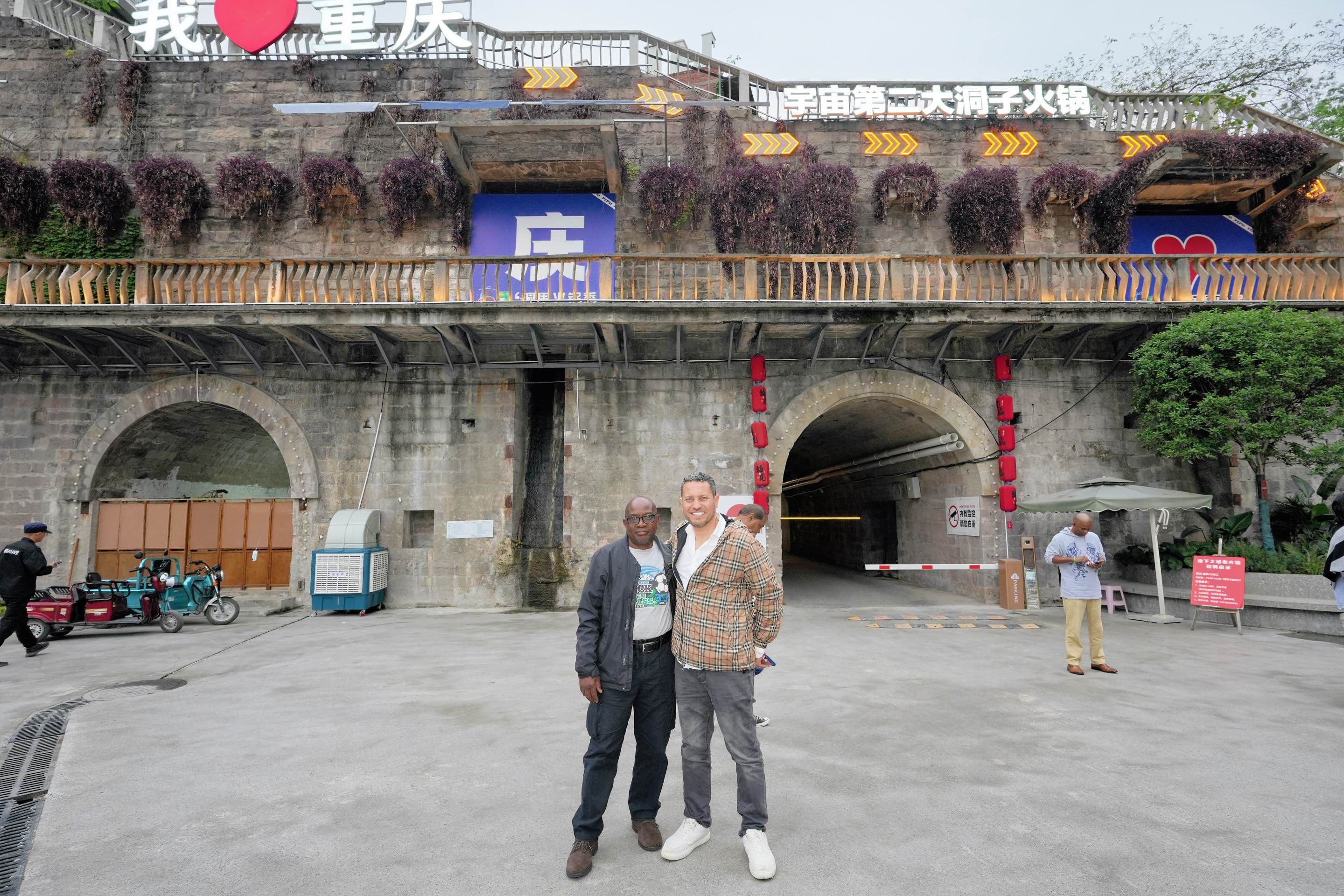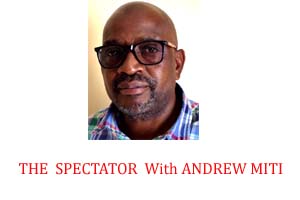A journey through Chongqing, Shanxi, Beijing
BY the time I stepped off the third plane—legs heavy, eyes fighting sleep, body jetlagged—I knew this wasn’t going to be just another trip. From Lusaka to Dubai, then Dubai to Guangzhou, and finally to Chongqing, the 18-hour journey was a lesson in distance, scale, and anticipation.China wasn’t just far away in kilometers—it pulsed with […]


BY the time I stepped off the third plane—legs heavy, eyes fighting sleep, body jetlagged—I knew this wasn’t going to be just another trip. From Lusaka to Dubai, then Dubai to Guangzhou, and finally to Chongqing, the 18-hour journey was a lesson in distance, scale, and anticipation.
China wasn’t just far away in kilometers—it pulsed with a different rhythm, another world entirely. And I had arrived not as a tourist, but as a storyteller, a journalist tasked with peeling back the curtain on one of the world’s most remarkable nations.
I was among a select group of delegates invited to the Chongqing Economic and Trade Promotion Forum and Seminar for Leaders of Media Organisations, held from April 18 to 29, 2025. The event carried a compelling theme:
“Stories of the CPC: Achievements of Chongqing in Practicing Xi Jinping Thought on Socialism with Chinese Characteristics for a New Era.”
City of mountains
and rivers
As we drove from the airport, the city’s striking topography caught my eye—hilly, mountainous, and breathtakingly beautiful.
No wonder Chongqing is called the “City of Mountains and Rivers.” Nestled in southwest China on the upper reaches of the Yangtze River, 76 percent of Chongqing’s land is mountainous, shaping both its identity and economy.
The Yangtze, China’s longest river, flows through the heart of Chongqing for 691 kilometers, joined by vital tributaries like the Jialing and Wujiang. These waterways have long shaped the city’s story.
Yet what amazed me most was how, despite its rugged terrain, Chongqing has become a powerhouse of advanced manufacturing. It is China’s motor vehicle production epicenter, the world’s leading producer of laptops, and a significant mobile phone manufacturer. With a GDP of RMB 3.2 trillion and 5.7 percent annual growth, the city stands as a beacon of industrial and technological prowess.
But Chongqing is not resting. It is now investing heavily in intelligent connected vehicles, next-generation electronics, and advanced materials—a future rooted in digital innovation and automation.
Where past and
future coexist
Chongqing holds a cultural soul stretching back 3,000 years. Spanning 82,400 square kilometers and governing 38 districts and counties, with a population nearing 32 million, it is one of China’s largest municipalities.
The city’s automotive sector alone produces 2.5 million vehicles annually—a 94 percent increase in recent years. Its strategic position at the intersection of the Silk Road Economic Belt, the 21st Century Maritime Silk Road, and the Yangtze River Economic Belt makes it a vital hub for logistics and global trade.
To the east, the Yangtze River Golden Shipping Route connects the city to China’s coastal zones and beyond—to Africa and the Americas. What better place to host a transformative economic and trade forum?
A message of peace and collaboration
During the high-level meeting, senior city officials emphasised Chongqing’s role as a model of peace, free trade, collaboration, and cultural exchange—a future vision for global development built on mutual understanding.
The accompanying seminar, which took us across Chongqing, Shanxi, and Beijing, was a deep dive into development, media innovation, and cultural pride. With each stop, the message became clearer: China’s modernisation is rapid, complex, and instructive for us back home in Zambia.
Living in harmony
with nature
To witness such massive economic activity unfold in a mountainous city was surreal.
The Chinese have mastered the art of building in challenging terrain.
They’ve turned geographical limitations into strategic advantages, blending nature with urban living in extraordinary fashion.
From my hotel window, I saw green hills woven into the city’s fabric. Roads snaked through mountains without chaos or congestion.
It was a vision of order, sustainability, and meticulous planning. Clean air, efficient transport, and a calm sense of order permeated the city.
Then came the monorails—silent, rubber-tired, and gliding through apartment blocks. At first, I thought I was dreaming. But our hosts arranged a ride, confirming the spectacle. It left us speechless.
A skyline that speaks
As dusk fell, Chongqing lit up in celebration of its achievements—past, present, and future. Bridges, towers, and riverbanks glowed during a spectacular light and drone show. Thousands of locals and foreign tourists gathered by the Yangtze, cameras raised, faces glowing.
Then, 5,000 drones rose into the night sky, forming symbols, messages, and animated designs.
A breathtaking fusion of technology, art, and pride. Standing in that crowd, I felt part of something magical—a city writing its story in the stars.
Revolutionary echoes
Next, we visited the Hongyan Revolutionary History Museum, where preserved quarters brought history to life.
I stood in the very room where Mao Zedong, Zhou Enlai, and others once strategised during the resistancewar against Japan. Mao’s jacket, desk, and bed— still preserved—spoke volumes about a nation’s journey from turbulence to transformation.
Later, at Minzhu Community Village, we saw how China integrates modern governance and digital technology at the grassroots—ensuring no one is left behind.
At the SERES Super Factory, we witnessed a marvel of modern engineering.
We ended that day with a nostalgic dinner in an old underground bomb shelter, now transformed into a hotpot restaurant. My first time dining underground—what a memory!
Spiritual timelines and cultural treasures
The Dazu Rock Carvings, a UNESCO World Heritage Site, stunned us with centuries-old sculptures carved into cliffs.
At the Western China International Communication Organisation (WCICO), we joined a symposium on international media relations and cultural storytelling.
Shanxi Province: Tradition meets industry
Upon arrival in Shanxi, we were welcomed by the gracious Ms. Li Yan, Deputy Director General of the Provincial Foreign Affairs Office. Highlights of our visit included:
•Taiyuan Heavy Machinery Group – towering machinery and cutting-edge tech
•Xiaoxitian Scenic Area – backdrop of the film Black Wukong
•Hukou Waterfall – a thundering marvel on the Yellow River
•Rongzi Winery – cultural performances and tastings
•Yongle Palace, Ruicheng County – breathtaking mural art and theatrical reenactment
•Yuncheng Daily Newspaper – a first-class provincial publication
•Yuncheng Museum – housing over 10,200 historical items
Shanxi’s hospitality was warm and unforgettable.
The authorities wouldn’t let us leave for Beijing without a farewell banquet— graciously attended by Ms. Li herself.
Beijing: Empire, innovation, and the future of news
Our final leg in Beijing was no less captivating. We began with a memorable meeting with Vice Minister Sun Haiyan of the International Department of the CPC Central Committee.
Next was the majestic Forbidden City. Walking its stone-paved courtyards, I could almost hear the rustle of silk robes and imperial decrees.
The presence of past emperors felt tangible— etched into every beam and tile.
At Tsinghua University, we attended a lecture on Artificial Intelligence and Communication.
The provocative question—Could AI replace journalists? — lingered as we explored how storytelling might evolve in an algorithm-driven era.
At Xinhua News Agency, we marveled at AI-powered newsrooms and participated in a forum themed: “Navigating the Transformation of News Communication in the Age of AI.”
It was eye-opening to see how traditional journalism is adapting to stay relevant.
We ended on a creative note at the Beijing Film Academy, where entries for the “Beijing – A Global City” video contest captured the capital’s heartbeat— from its historical soul to its futuristic stride.
Final reflections
As I boarded my flight home, I carried more than just photos and facts. I carried perspective. China is not just developing; it is evolving with intentionality, harmony, and speed.
Chongqing, Shanxi, and Beijing each revealed a different facet of a nation striving to balance heritage and innovation.
And more than anything, I couldn’t agree more with China’s message to the world: a call for peace, cooperation, and cultural exchange—forging mutual understanding in pursuit of a better, shared future for all.

 Comrade
Comrade 






